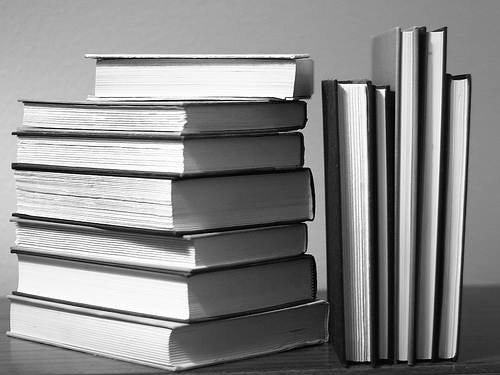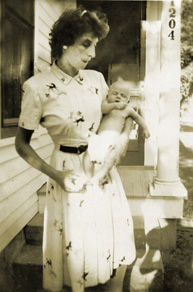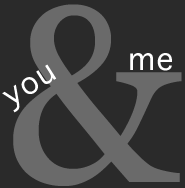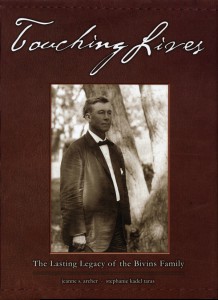I am just wrapping up a book project that I impetuously started late last Friday evening. I have created a few books “from scratch”, but usually I function as the designer, only responsible for the photos, design, layout and sometimes coordinating with the printer. So conceiving, writing, designing and producing an entire book—alone? This was really hard!
Because this book is based on photos, that’s where I started. I knew exactly which ones I wanted to use and how I wanted to present them. Fortunately, they were already digitized, organized and optimized for print output.
But then I decided that I also wanted to use this book as an example of a visual index combining metadata stored in the image file with a thumbnail image. And while I totally get this in theory, executing it in Adobe Bridge and InDesign took a few false starts—and actually having to RTFM *.
So finally, late Saturday afternoon, I had 36 pages of beautiful images and useful metadata, but that alone does not a book make.
At this point I sketched out the other pages I wanted in the book: title page, publication information page, background on the photographer and the photographs, information about the book itself and some context about where it fits into the overall project. [Hint: this is ideally done before diving into a project, but sometimes you have to start in the middle, then go back to the beginning later.]
Now for writing the actual copy. What exactly are these pages going to say? I know there’s some material on the photographer that someone else wrote but I don’t have that in a digital file and I don’t want to disturb her on the weekend—she may not have quite the enthusiasm for this unfunded project that I do—so I re-key it from hardcopy. But the part about the book and the project? That’s all in my head, so I need to switch mental gear from typist [easy] to writer [not so much] and thinker—damn hard on a Saturday evening!
Once I had written my introductory material, I decided I needed more photos to document the genesis of this project. I knew I had them, but where? Somewhere between two computers, three external hard drives, various jump drives, CDs, and DVDs. Finally found them buried as attachments to an email. Sound familiar?
Hmmm. They’re not really as good as I remembered. So now as photo editor, which ones do I choose? As Photoshop ninja, what can I do to punch them up? As page compositor, how do I lay them out to tell the story I want to tell? Uh, what story is it, exactly, that I want to tell? [My brain is getting tired.]
Because I’m printing the book via blurb.com and the price changes when you go over 40 pages, I tried to keep it to that size, but it really wasn’t working. My original instinct was to use a square format but then I wondered if I might save some space and keep to my 40 page limit by using a landscape format. So I redid the pages in that format but I just didn’t like it. This book needs to be square.
Since the next price jump isn’t til 80 pages, now I have lots of room to play with. So I fiddle with the page margins and the typographic specifications to open up the book and give the text some breathing room.
By the time I pulled myself away from the computer late Sunday night, the images looked great, the pagination was working, but the typography was inconsistent because I kept changing my mind about the fonts, sizes, and line spacing I wanted to use. I was eyeballing, doing my typography on the fly, so I had to go back and set up style sheets to make sure all the text was set consistently. Because there’s nothing that makes me crazy like inconsistent typesetting in a book.
A little aside here: For those of you reading this who have attended one of my Print Production Workflow teleclasses, you’re probably thinking that this doesn’t sound like it has the “crisp edges” I talk about, with clear sign-offs from one phase to another. This is one of those “do as I say, not as I do” situations—and a good example of how even those of us who know better will often not do the kind of smart work on our own projects that we would if we were working for pay or as part of a team. That’s what makes it so hard when you work on a book completely alone.
The book is still not ready to send off to be printed. I have to write the copy for the title page [no, it doesn’t yet have a title, or a subtitle and I’m not sure about credits], publication and marketing information, and table of contents. I have to design these pages as well as the front cover, decide what will go on the spine and back cover, which probably involves more writing. And more design. And more photos. Maybe I will want to add some subtle embellishments on the pages. And the photos and written material I’m using that don’t belong to me? I need to get permission to use them and find out exactly how to write the credits. Oh, yeah—it will need editing and proofreading as well.
So if you’ve been doing all of this yourself—writing, editing, designing, photo editing, page layout—and you’re worn out and frazzled at the end [and perhaps not as satisfied with the results as you had expected], don’t feel bad. A book is an amazingly complex conceptual and physical structure. It involves a lot of different tasks, requiring different skill sets, knowledge, experience—even different temperaments. It’s rarely easy, but always rewarding when you finally hold the printed and bound book in your hands, turn its pages, and marvel at the ingenuity of it all.
———————————————————————————-
* read the frakkin’ manual
————————————————————————————————————–
Some related posts that might be of interest:
———————————————————————————-
If you would like to learn the “do as I say” part of the process, you might find one of my Print Production Workflow teleclasses helpful.
————————————————————————————————————–
Image by mchristianphotos via flickr used under a Creative Commons License











